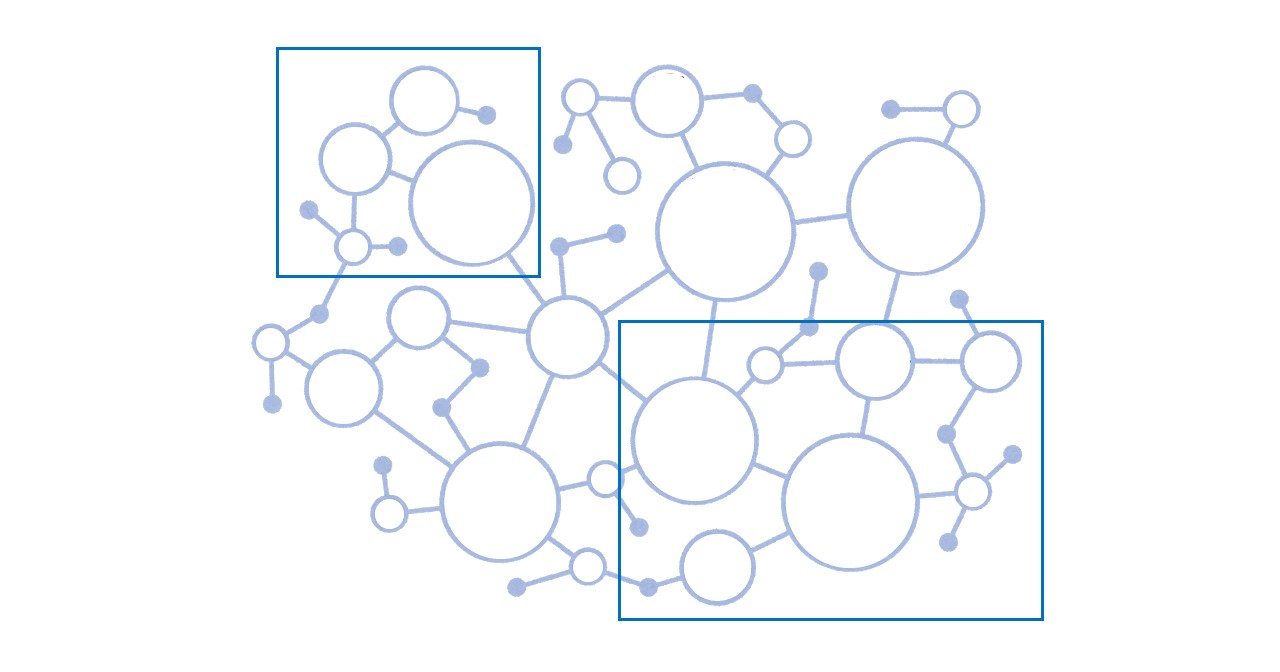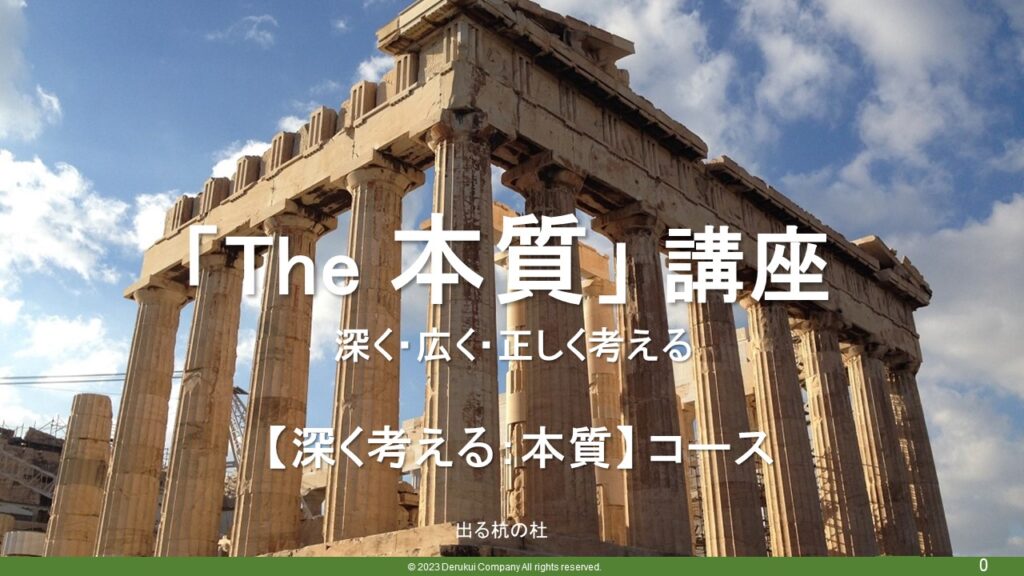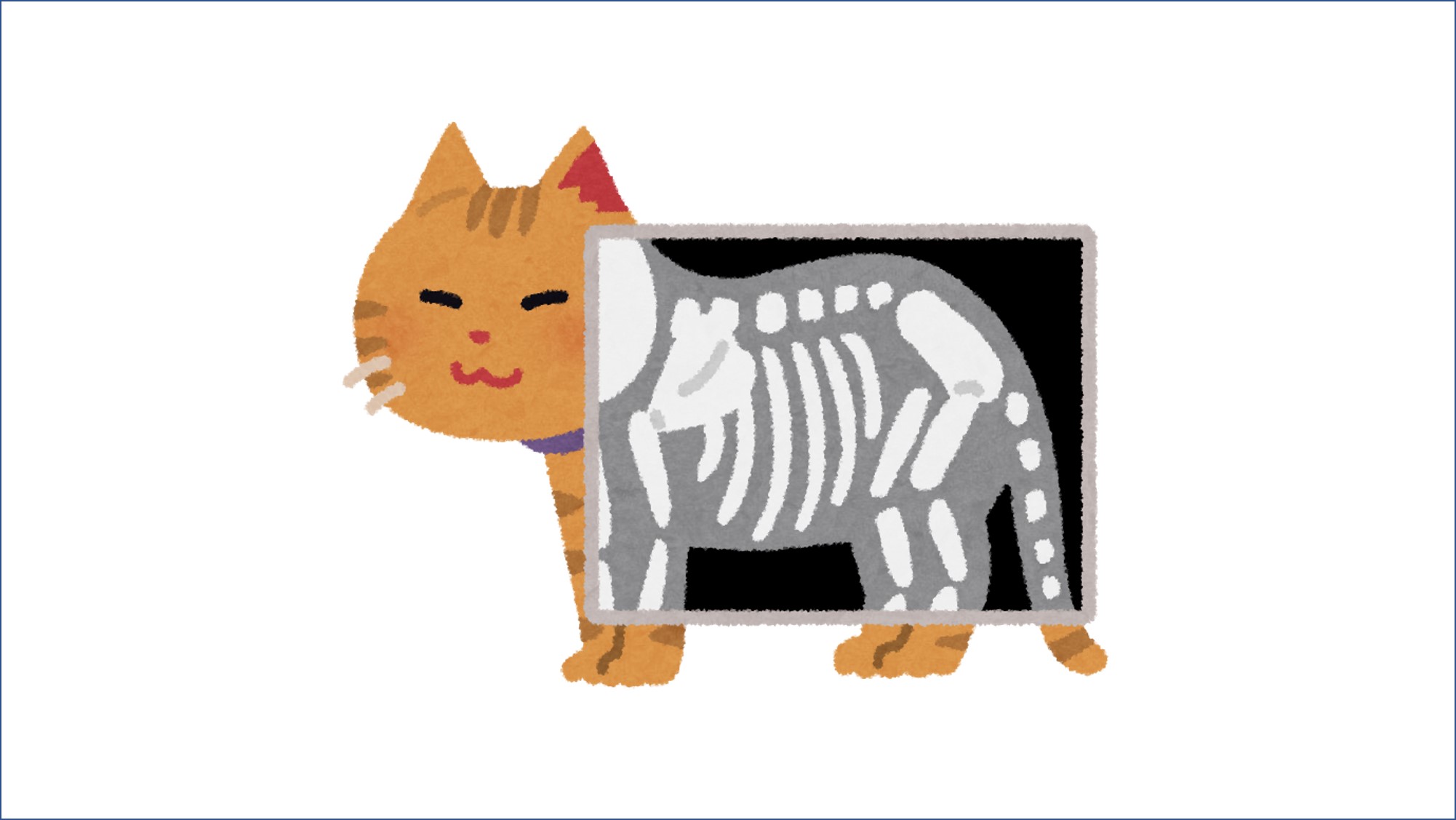In order to deepen our understanding of essence, it is necessary to understand the mechanisms of recognition that human being has.
Human being represents reality into the brain by decomposing it into things (recognitions) that make it up, that is, attributes and by relating those things (recognitions) to each other. This process is to recognize, or to see reality, and the reality (recognitions) represented into the brain as the output of the process is “how we see reality.”
For example, when we see a cat, we decompose it into things that make it up, that is, attributes like head, body, limbs, and tail, and decompose the head into ears, eyes, nose, mouth, and whiskers, then, relating them to each other, like the head, limbs, and tail are touching the body, the ears are touching either side of the head.
On top of that, in the process to see reality, we bind all the same individual things (recognitions) together as a universal thing, that is “all of a thing,” by defining “what a thing is” with essence (“binding” is also a relating).
At the same time, we position each individual thing (recognition) as one of a universal thing, that is, “one of a thing” (“positioning” is also a relating).
For example, we bind all individual cats together as a universal cat, that is “all of a cat” by defining “what a cat is” with essence of a cat, and position each individual cat as one of a universal cat, that is, “one of a cat.”
However, in reality, only individual cats exist and universal cats don’t.
Just as that, only individual things exist and universal things don’t.
Why, then, do we position an individual thing as one of a universal thing that doesn’t exist?
For example, to recognize an individual cat without positioning it as one of a universal cat, that is “one of a cat,” we have to define it by many attributes, such as “living creature,” “four legs,” “round eyes,” “triangular ears,” “meow,” “short tail,” “white body hair,” or “long beard” and still this is not enough.
What each of these many attributes means is also an individual thing positioned as one of a universal thing: “one of a living creature,” “one of a four legs,” “one of a round eyes,” “one of a triangular ears,” “one of a meow,” “one of a short tail,” “one of a white body hair,” “one of a long beard.”
Therefore, to recognize these many individual things, we have to define them with many more attributes, and repeat this endlessly.
That is to say, if we try to see reality without positioning an individual thing as one of a universal thing, we will have to define many individual things by many other individual things endlessly.
However, we would have to break it off somewhere, so the reality we see would have to be ambiguous.
We are able to greatly simplify and streamline the process of seeing reality by positioning an individual thing as one of a universal thing.
Without essence, we would not even be able to adequately represent reality in the brain.
Hereafter, we shall look at some important matters related to essence.
The world tends to think that there is only one essence for one thing, but this is false.
There is not always only one essence for one thing. There can be more than one.
Actually, “a universal characteristic of a thing,” that is essence, of water is not only “a structure expressed by the chemical formula H2O.” There are also attributes, that are physical properties such as density and specific heat that are specific to all of water.
Essence is not necessarily a single attribute.
It can be a combination of multiple attributes (this can also be considered a single attribute though).
Also, attributes that make essence up do not have to be essence.
Actually, “a structure expressed by the chemical formula H2O,” that is essence of water, is a combination of multiple attributes including “H (hydrogen)” and “O (oxygen).”
“H” and “O” are not essence of water, because they are attributes that things other than water also have.
Essence tends to be thought of as “something that is inside a thing and usually invisible,” but this is also false.
Essence can be an “internal attribute” that is inside a thing, or it can be an “external attribute” that is outside a thing, i.e., its relationship with other things.
For example, essence of a child is the relationship with the parent, “having a parent,” and the relationship with the parent, “having a parent,” is an “external attribute” of a child, and is usually visible.
In fact, even in philosophy, essence is often advocated to be “something that is inside a thing and usually invisible.”
The antonym of “essence” is taken to be “phenomenon” in the sense of “what essence manifests externally,” and accordingly, some dictionaries use “phenomenon” as a philosophical antonym of “essence”.
However, what kind of physical event is true to “essence manifests externally?”
This point is unclear, and since it is so, “what essence manifests externally” is also unclear. Therefore, the idea that the antonym of “essence” is “phenomenon” is also unclear.
The idea that the antonym of “essence” is “phenomenon” is unlikely to be correct.
What, then, should we call an attribute other than essence that a thing has?
In philosophy, an attribute other than essence that a thing has is called “accidence.” It means an attribute that “an individual thing” happens to have, that is an attribute that is accidental.
This is in contrast to essence, an attribute that “a universal thing” has in common, and there is no other notable name for it.
Therefore, here, following philosophy, we call an attribute other than essence that a thing has accidence.”
While essence is “a universal characteristic of a thing,” that is, “an attribute that is common to all of a thing and not common to all other things,” accidence is “an attribute that is common to a part (including one) of a thing and can be common to other things.”
At the same time, here, we consider the antonym of “essence” to be not “phenomenon,” but “accidence.”
Needless to say, since essence is “a root of how we see reality,” in short, “root,” we may also consider the antonym of “essence” to be “surface,” as the world already does.

– Move on to the previous article.
– Move on to the next article.

